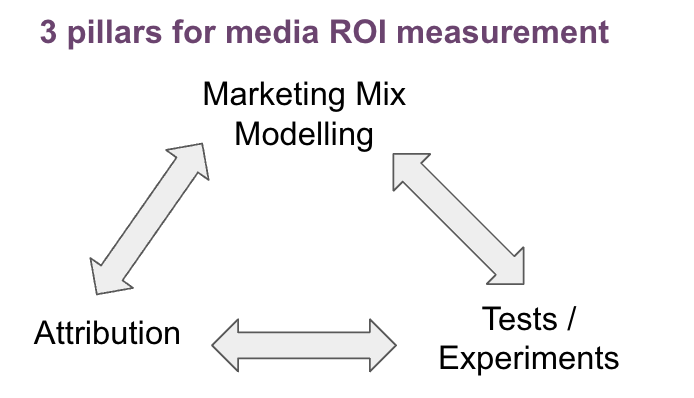Measuring media effectiveness and making informed budget allocation decisions is one the key responsibilities of marketing executives. While it has always been a challenge, it has been getting more and more difficult over the past years as user-level data – often used for granular measurement with attribution modelling – has been less available due to a number of factors:
It is not unusual that brands today miss 40-50% of user data behaviour due to missing consents or technical changes on iOS or browser side. Should you then make major budget decisions based on your attribution model with so much data missing?
The answer to this lies in using a framework employing 3 methods together

Marketing Mix Modelling (MMM) is a time-proven yet complex way to measure the impact of media spend and other activities or events (such as discounts and pricing, changes in distribution, promotions, competitors’ activity or external events) on your business KPIs – most often sales or new customer acquisition.
There has been significant progress over the last 5 years in MMM techniques and this has made MMM much more accessible to a larger group of advertisers – but arriving to a reliable and useful production-level model still remains a demanding exercise requiring experience and expertise.
Experiments help measure the “ground truth” – true incrementality of media channels, specific campaigns or promotions or other changes and interventions – free delivery, change in pricing, changes in distribution etc.
There are multiple techniques and approaches and no silver bullet here – for example, some methods are great for big markets like the US but will not work in more fragmented geographies, finding the balance between what is practical and robust enough from a evaluation point of view is another complex topic.
But we have seen that practically without exception all the most successful advertisers use incrementality tests as a key part of their marketing measurement toolkit.
We can help with:
Attribution modelling used to be the primary tool digital marketers used to measure channel performance – it always had serious limitations (even with advanced algorithmic models) such as generally ignoring brand baseline, ignoring all offline world, underrepresenting long-term brand building channels or in general channels with sparse digital touchpoints or limited insights into channel diminishing returns and scalability etc.
In recent years a new major challenge appeared with privacy restrictions (both technical – iOS and web browsers, and regulatory) resulting in often 40-60% of user touchpoints not being tracked. This has massive implications for attribution models reliability and attribution vendors try to approximate the missing data but the accuracy of such approaches can be often questioned.
We can help with: